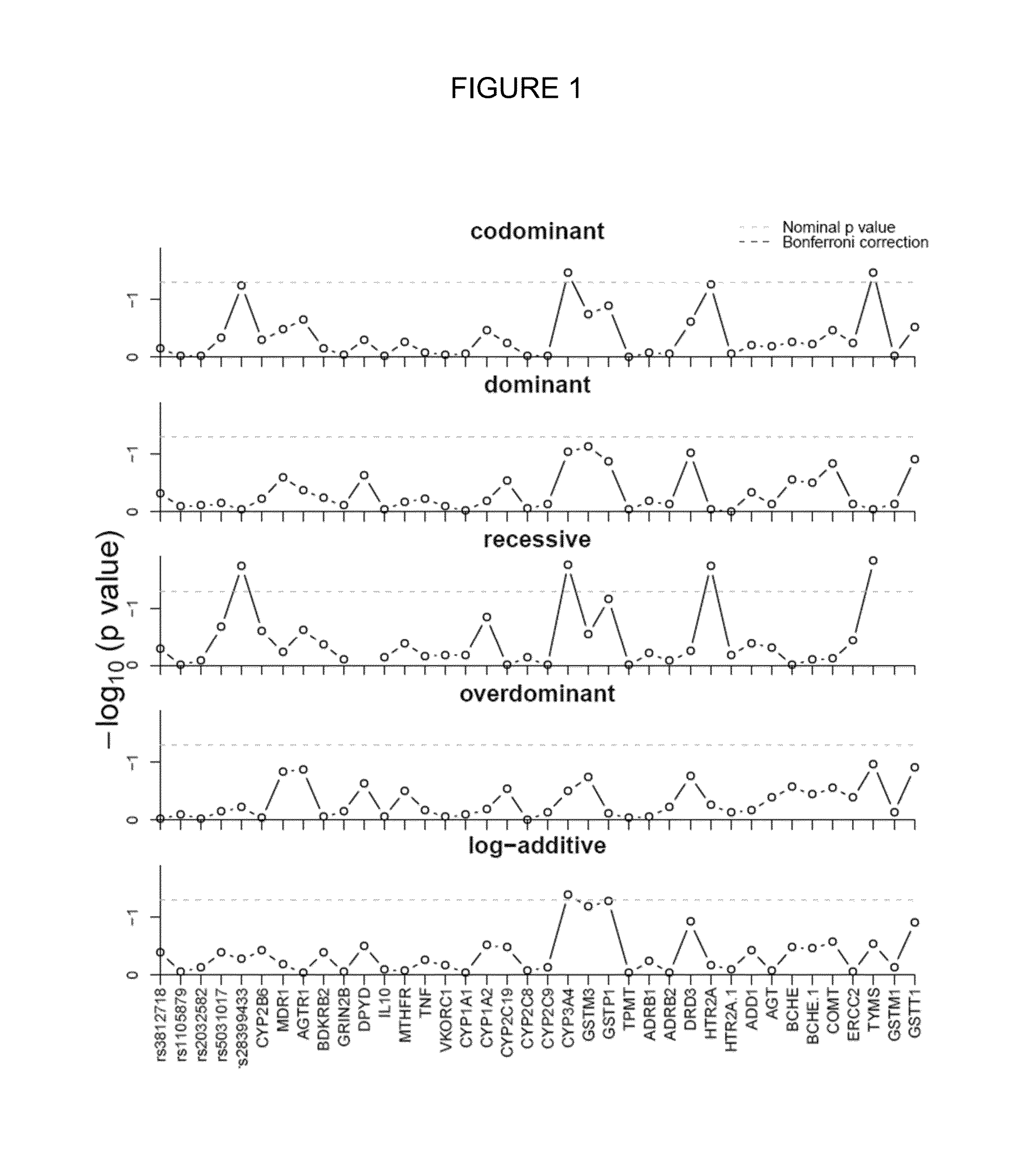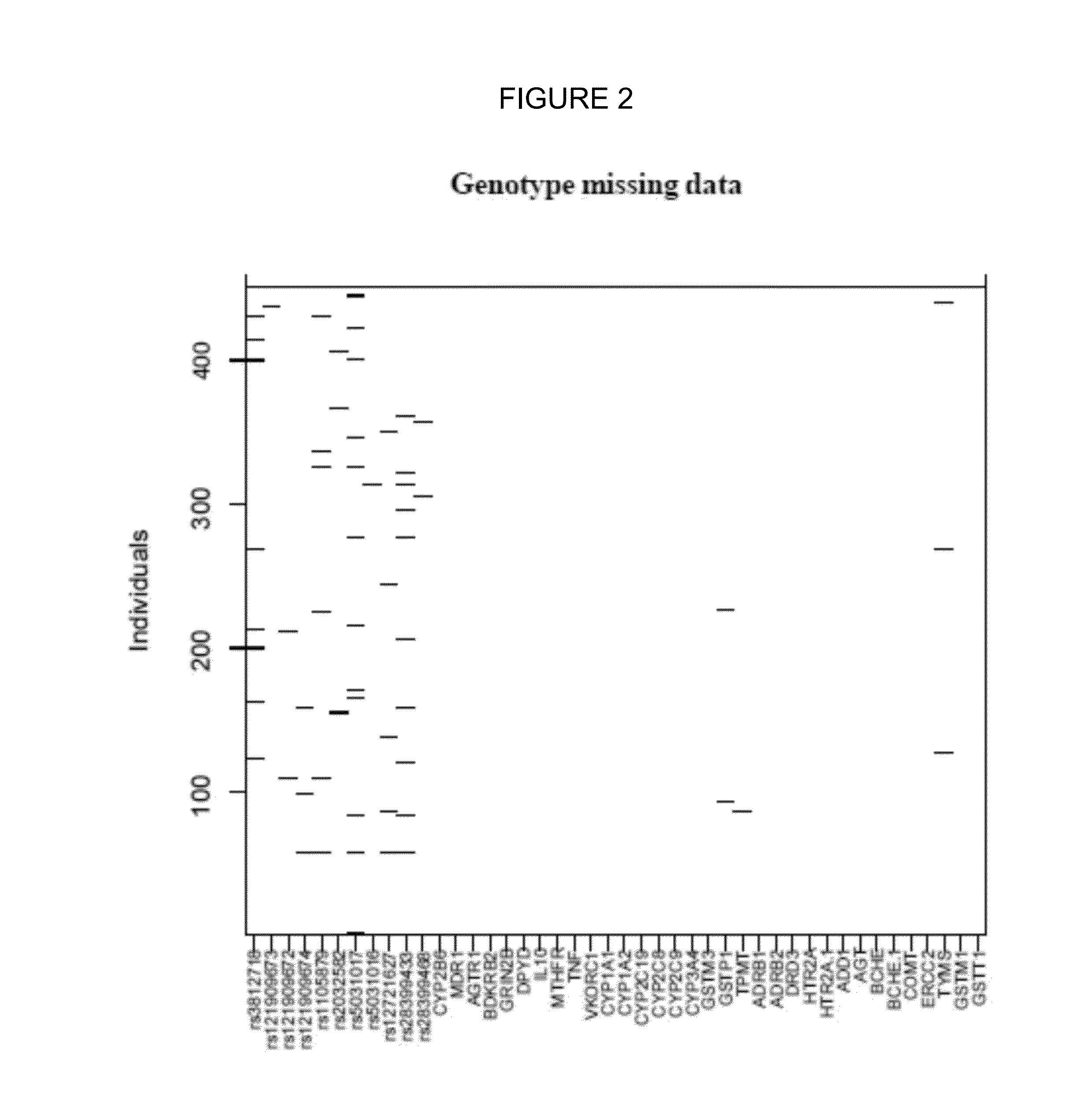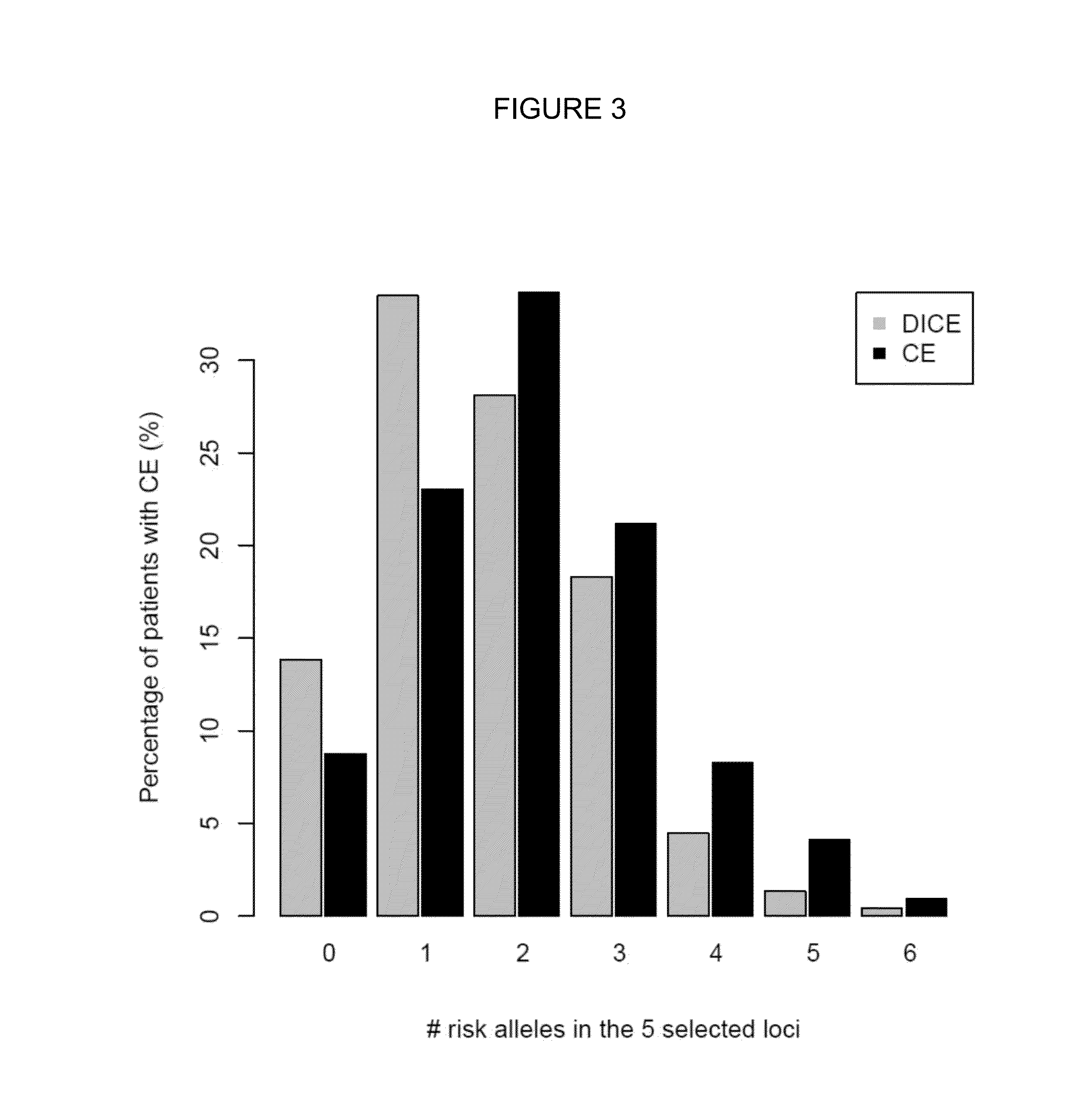Biomarkers for epilepsy
a biomarker and epilepsy technology, applied in the field of epilepsy biomarkers, to achieve the effects of improving predictive capacity, high prediction capacity, and avoiding snps
- Summary
- Abstract
- Description
- Claims
- Application Information
AI Technical Summary
Benefits of technology
Problems solved by technology
Method used
Image
Examples
example 1
Study Design
[0229]Cross-sectional, epidemiological, case-control, multicenter study to analyze predictive factors related to DICE in patients with epilepsy. An algorithm will be designed with multiple variables, including genetic, environmental, clinical and diagnostic factors, in a total of 564 patients.
[0230]The study population were patients with epilepsy, 18 years of age or older, males and females, who attended Epilepsy Units or Specialised Consultancies. Patients were included in the study consecutively, in the order in which they attended the center and when they met the inclusion criteria. The patients were divided into two groups:
G.1: DICE patients (≧1 epileptic seizure per month, in the last 12 months after)
G.2: controlled patients (1 year without epileptic seizures for one year or for three times between crisis interval [the longest period], after the first or second AED in monotherapy)
[0231]The recruitment period was 10 months. The participating investigators collected t...
example 2
Rationale for the Sample
[0250]The main focus of this study was the identification of factors associated with Difficult to Control Epilepsy (DICE). There is a consensus between studies that the percentage of patients diagnosed with epilepsy who present DICE is approximately 30%.4 According to these data, the inclusion of 650 patients in the current study would enable the ratio of interest to be estimated with a 95% confidence interval and 4% precision.
[0251]The calculation of the sample size was carried out with the PASS1 programme, version 2020 (Hintze J. 2001. NCSS and PASS. Number Cruncher Statistical Systems. Kaysville, Utah. www.ncss.com).
Sample Size to Determine the Predictability of Genetic Polymorphisms are Difficult to Control Epilepsy
[0252]It was created a predictor that includes clinical and genetic variables with a predictive capability of 75% (AUC: 0.755) that presented a sensitivity and specificity of 68.3% and 68.8%, respectively. In other words, rate of false positive...
example 3
[0290]The analyses were carried out using the available data, without employing substitution techniques for absent values, and the number of missing data in each analysis was described. Nevertheless, to generate multivariate models, the processing of absent values was assessed in terms of the number of missing data in the set of predictive variables.
[0291]Descriptive analyses was carried out separately for all the evaluation criteria, using tables of absolute and relative frequency in the case of discrete quantitative and qualitative variables, and using statistical values of mean, standard deviation, extreme values and quartiles in the case of continuous quantitative variables.
Definition of the Dependent Variable
[0292]The objective of this study was to identity the patients who were resistant to currently available antiepileptic treatments (AEDs), also known as patients with Difficult to Control Epilepsy (DICE). With this aim two patient groups were selected: th...
PUM
 Login to View More
Login to View More Abstract
Description
Claims
Application Information
 Login to View More
Login to View More - R&D
- Intellectual Property
- Life Sciences
- Materials
- Tech Scout
- Unparalleled Data Quality
- Higher Quality Content
- 60% Fewer Hallucinations
Browse by: Latest US Patents, China's latest patents, Technical Efficacy Thesaurus, Application Domain, Technology Topic, Popular Technical Reports.
© 2025 PatSnap. All rights reserved.Legal|Privacy policy|Modern Slavery Act Transparency Statement|Sitemap|About US| Contact US: help@patsnap.com



